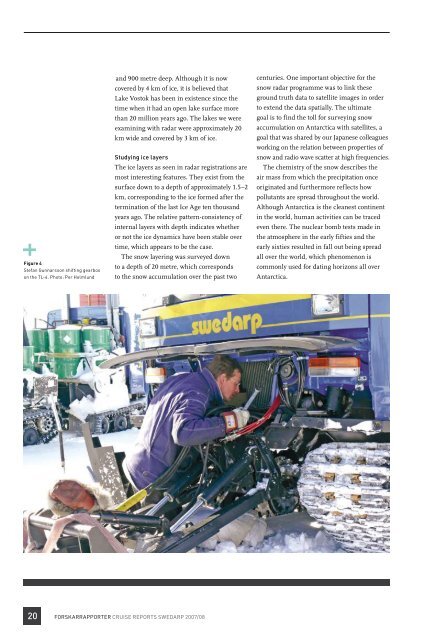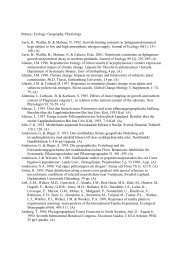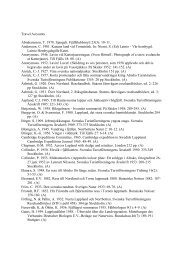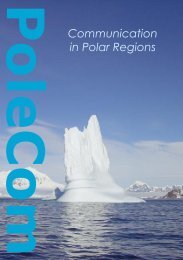Ladda ner årsbok 2008 (6,5 MB) - Polarforskningssekretariatet
Ladda ner årsbok 2008 (6,5 MB) - Polarforskningssekretariatet
Ladda ner årsbok 2008 (6,5 MB) - Polarforskningssekretariatet
Create successful ePaper yourself
Turn your PDF publications into a flip-book with our unique Google optimized e-Paper software.
Figure 4<br />
Stefan Gunnarsson shifting gearbox<br />
on the TL-4. Photo: Per Holmlund<br />
20<br />
and 900 metre deep. Although it is now<br />
covered by 4 km of ice, it is believed that<br />
Lake Vostok has been in existence since the<br />
time when it had an open lake surface more<br />
than 20 million years ago. The lakes we were<br />
examining with radar were approximately 20<br />
km wide and covered by 3 km of ice.<br />
Studying ice layers<br />
The ice layers as seen in radar registrations are<br />
most interesting features. They exist from the<br />
surface down to a depth of approximately 1.5–2<br />
km, corresponding to the ice formed after the<br />
termination of the last Ice Age ten thousand<br />
years ago. The relative pattern-consistency of<br />
internal layers with depth indicates whether<br />
or not the ice dynamics have been stable over<br />
time, which appears to be the case.<br />
The snow layering was surveyed down<br />
to a depth of 20 metre, which corresponds<br />
to the snow accumulation over the past two<br />
FoRSKARRAPPoRTER CRUISE REPoRTS SWEDARP 2007/08<br />
centuries. One important objective for the<br />
snow radar programme was to link these<br />
ground truth data to satellite images in order<br />
to extend the data spatially. The ultimate<br />
goal is to find the toll for surveying snow<br />
accumulation on Antarctica with satellites, a<br />
goal that was shared by our Japanese colleagues<br />
working on the relation between properties of<br />
snow and radio wave scatter at high frequencies.<br />
The chemistry of the snow describes the<br />
air mass from which the precipitation once<br />
originated and furthermore reflects how<br />
pollutants are spread throughout the world.<br />
Although Antarctica is the cleanest continent<br />
in the world, human activities can be traced<br />
even there. The nuclear bomb tests made in<br />
the atmosphere in the early fifties and the<br />
early sixties resulted in fall out being spread<br />
all over the world, which phenomenon is<br />
commonly used for dating horizons all over<br />
Antarctica.








